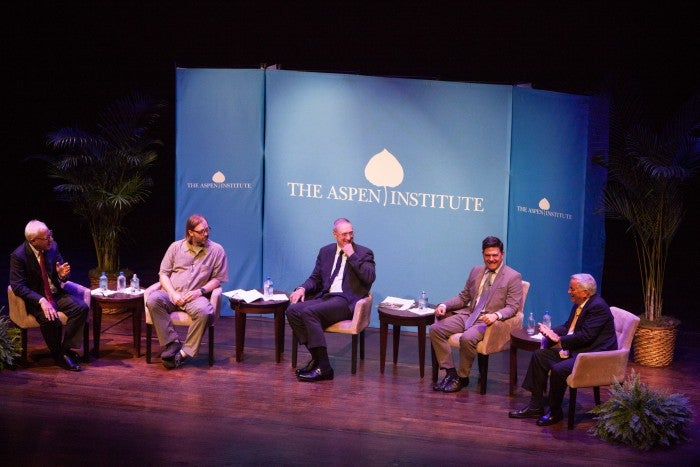
A recent Aspen Around Town event titled “The Art and Science of Imagination and Creativity” brought together titans of their respective artistic fields (Wylie Dufresne, James Beard Foundation award-winning chef and restaurateur; Gary Haney, architect and Design Partner at the world-renowned Skidmore Owings & Merrill; Walter Isaacson, biographer of Benjamin Franklin, Steve Jobs, and Einstein as well as President and CEO of the Aspen Institute; and Leo Villareal, prominent sculptor and creator of The Bay Lights) to discuss with David Rubenstein (Co-Founder and CEO of the Carlyle Group and Chairman of the Kennedy Center) the origins and evolution of their personal creativity into the respected and meaningful work they are doing today.
During the discussion, Rubenstein shared insights regarding the nature of creativity, which he explained is often viewed as disruption. The panelists recalled times when their creativity was viewed as disruptive, and collectively agreed that despite being that, each received a great deal of parental support in developing and focusing their creativity into what we see today. While none noted knowing immediately how their creativity would manifest, the journey of discovery was encouraged early on. Many similarities exist in their creative processes despite the great differences in their work.
Beyond this insight into the evolution of creativity from disruption to meaningful work, the panelists all cited a role between creativity and collaboration as an integral part of their processes. In discussing their favorite aspects of their work, Dufresne, Haney, and Isaacson all spoke fondly of the fulfilling nature of working collaboratively with their teams, as it is in collaboration that their individual creativity is buttressed and amplified by the additional perspective, imagination, and knowledge of their colleagues.
When asked what kind of light sculpture Villareal would create on the Washington Monument if given the opportunity, he offered further insight into the role of collaboration in creativity. He was less interested in using the monument as a pedestal onto which he would create his sculpture (something that would be apart from the monument itself). Instead, he considered how he could engage and enhance the monument itself, essentially establishing another facet of collaboration – one between his creativity and his art, and the monument and what it symbolizes.
Janelle Gera is program manager at Aspen Across America.
Read more about this and other Aspen Around Town events at as.pn/aroundtown.

